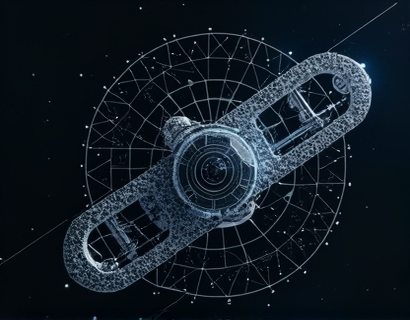Unlocking the Cosmic Interplay: Discovering the Hidden Mathematics and Science Behind the Universe's Mysteries
The universe, in all its vastness and complexity, presents a tapestry of mysteries that have captivated human imagination for centuries. At the heart of understanding these mysteries lies the intricate dance between science and mathematics. This interplay is not merely a tool for explanation but a profound language through which the universe communicates its deepest secrets. By delving into the hidden mathematics and science behind cosmic phenomena, we can unlock a deeper appreciation of the cosmos and the laws that govern it.
Science and mathematics are not separate disciplines but intertwined partners in the quest for knowledge. Mathematics provides the language and framework within which scientific theories are formulated and tested. The universe, with its patterns and structures, serves as an infinite laboratory where these theories are put to the test. From the smallest subatomic particles to the largest galaxies, the universe exhibits a harmony that can be described and understood through mathematical equations and scientific principles.
The Language of the Universe
The universe speaks in the language of mathematics. This language is universal, transcending the boundaries of time and space. The equations that describe the motion of planets, the behavior of light, and the structure of atoms are the same everywhere in the universe. This universality of mathematical laws is a profound insight, suggesting that the universe is fundamentally ordered and predictable.
Consider the equation E=mc^2, a cornerstone of Einstein's theory of relativity. This simple yet powerful equation reveals the equivalence of energy and mass, a concept that has revolutionized our understanding of physics. It shows how a small amount of mass can be converted into a vast amount of energy, a principle that powers the stars and underpins the functioning of nuclear reactors. This equation is not just a mathematical formula; it is a window into the fundamental nature of reality.
Patterns in the Cosmos
The cosmos is replete with patterns that reflect underlying mathematical principles. The spiral arms of galaxies, the branching of trees, and the flow of rivers all exhibit fractal geometry, a mathematical concept that describes self-similar patterns at different scales. Fractals are not just a curiosity; they play a crucial role in understanding complex systems, from the growth of crystals to the behavior of financial markets.
Another striking example is the Fibonacci sequence, a series of numbers where each number is the sum of the two preceding ones (1, 1, 2, 3, 5, 8, 13, ...). This sequence appears in the arrangement of leaves on a stem, the spirals of a sunflower, and even the structure of DNA. The Fibonacci sequence is a manifestation of the golden ratio, a mathematical constant that has been observed in art, architecture, and nature for centuries, suggesting a deep connection between aesthetics and mathematics.
Quantum Mechanics and the Fabric of Reality
One of the most profound areas where mathematics and science converge is in the realm of quantum mechanics. Quantum theory describes the behavior of particles at the smallest scales, where classical physics breaks down. The mathematical framework of quantum mechanics, involving wave functions, probability amplitudes, and Hilbert spaces, has led to technologies such as semiconductors, lasers, and quantum computers.
The Heisenberg Uncertainty Principle, a cornerstone of quantum theory, states that the more precisely the position of a particle is known, the less precisely its momentum can be known, and vice versa. This principle challenges our classical intuition and has profound implications for our understanding of reality. It suggests that at a fundamental level, the universe is not deterministic but probabilistic, a concept that has sparked philosophical debates and scientific inquiry for decades.
General Relativity and the Curvature of Space-Time
Albert Einstein's theory of general relativity is another testament to the power of mathematical thinking in understanding the universe. General relativity describes gravity not as a force but as a curvature of space-time caused by mass and energy. The mathematical equations of general relativity, known as the Einstein field equations, predict phenomena such as the bending of light by gravity and the existence of black holes.
The prediction of gravitational waves, ripples in the fabric of space-time caused by the acceleration of massive objects, was confirmed in 2025 by the LIGO observatory. This discovery not only validated Einstein's theory but also opened a new window into the universe, allowing scientists to observe cosmic events in a way previously impossible. The mathematics behind general relativity continues to inspire new discoveries and deepen our understanding of the cosmos.
Cosmology and the Expanding Universe
Cosmology, the study of the large-scale structure and evolution of the universe, relies heavily on mathematical models and observations. The discovery that the universe is expanding, first proposed by Edwin Hubble, was a pivotal moment in cosmology. Hubble's law, which states that galaxies are moving away from each other at speeds proportional to their distance, provided strong evidence for the Big Bang theory.
The mathematical models of cosmology, including the Friedmann equations derived from general relativity, describe the expansion of the universe and the role of dark matter and dark energy. These mysterious components, which make up about 95% of the universe's total energy content, are still not fully understood but are crucial for explaining the observed acceleration of the universe's expansion. The interplay between mathematical models and observational data continues to refine our understanding of the universe's history and future.
Mathematics in Astrophysics
Astrophysics, the study of the physical properties and processes of celestial objects, is deeply rooted in mathematics. From the calculation of stellar atmospheres to the modeling of galaxy formation, mathematical tools are indispensable. The Hertzsprung-Russell diagram, a plot of stellar luminosity versus temperature, is a fundamental tool in stellar astrophysics. It reveals the life cycles of stars and helps classify them based on their evolutionary stage.
Numerical simulations play a crucial role in astrophysics, allowing scientists to model complex phenomena such as supernova explosions, accretion disks around black holes, and the large-scale structure of the universe. These simulations rely on sophisticated algorithms and high-performance computing, demonstrating the synergy between mathematical theory and computational science.
Mathematics and the Search for Extraterrestrial Intelligence
The search for extraterrestrial intelligence (SETI) is another area where mathematics and science intersect in fascinating ways. The mathematical framework of information theory and probability is central to the design of algorithms that sift through vast amounts of radio data in search of signals that could indicate intelligent life beyond Earth.
The Drake Equation, a probabilistic argument used to estimate the number of active, communicative extraterrestrial civilizations in the Milky Way galaxy, is a prime example of how mathematics can guide scientific inquiry. While the equation itself is speculative, it highlights the power of mathematical thinking in exploring the unknown and inspiring further research.
Conclusion
The interplay between mathematics and science is a source of endless wonder and discovery. The universe, with its intricate patterns and profound mysteries, continues to challenge and inspire us. By embracing the mathematical tools and scientific methods that help us understand it, we not only expand our knowledge but also deepen our appreciation of the cosmos. As we stand on the shoulders of giants, from ancient astronomers to modern physicists, we are reminded that the journey of discovery is far from over. The universe remains a vast, uncharted territory, waiting for us to unlock its secrets through the power of mathematics and science.










































